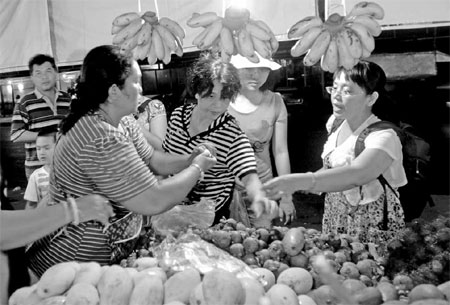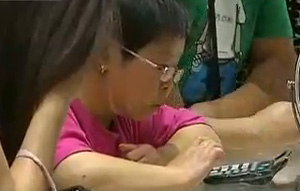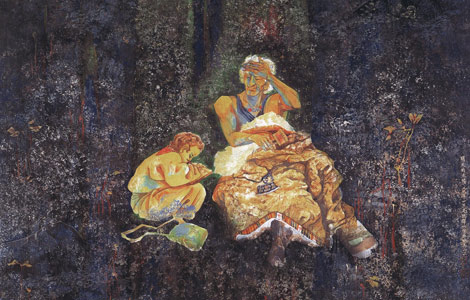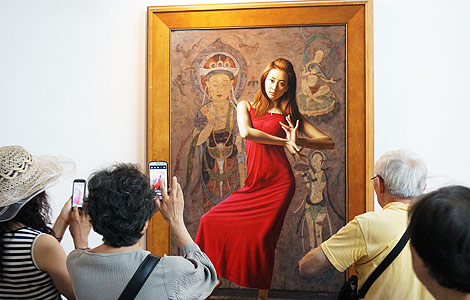New outbound tourism habit
Updated: 2013-06-03 08:09
By Wang Zhuoqiong and Wang Wen (China Daily)
|
|||||||||||
|
Chinese travelers buying fruit in Phuket, Thailand. According to the Annual Report of China Outbound Tourism Development 2013, the percentage of Chinese travelers who spent more than 5,000 yuan ($816) on their outbound trip was lower in 2012 than in 2011. Provided to China Daily |
Number of visits by Chinese see a year-on-year rise of 18.41 percent
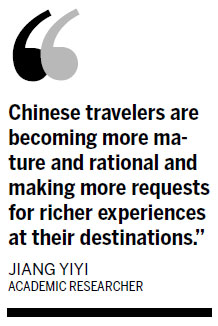 |
In her fifth visit to Hong Kong, Wang Ting, a 25-year old from northwestern China, spent a five-day holiday in April in a room with an ocean view in a luxury hotel.
The cost of the accommodation was nearly 20,000 yuan ($3,264). She spent only half of that on shopping.
"I've been here many times. I know what I want," she said. But Wang's aunt, who arrived in Hong Kong one week later, refused to stay at the same hotel.
"The room rates are too high and all I need is a bed to sleep in," said the 42-year-old. But she is not price sensitive when it comes to shopping. She bought two luxury watches, three branded handbags and some jewelry.
The two mirror the changing behavior of Chinese outbound travelers. An increasing number behave more prudently when buying overseas, accounting for a sharp decline in the purchase of high-end products, a recent survey found.
According to the Annual Report of China Outbound Tourism Development 2013, the percentage of Chinese travelers who spent more than 5,000 yuan on their outbound trip was lower in 2012 than in 2011.
The highest amount is still spent on shopping, at 34.1 percent, followed by transportation at 21.6 percent, showed the report conducted by the China Tourism Academy.
Dai Bin, head of the academy, said a small number of luxury items purchased by Chinese outbound travelers often overshadows the fact that most Chinese tourists going abroad choose to stay at cheaper hotels in the suburbs and spend sparsely on dining so they can spend more on shopping.
For example, in the United States, although shopping still tops the spending of Chinese travelers, the percentage who regard shopping as their primary purpose has dropped 6.8 percentage points compared with that of a year ago. Meanwhile, spending on leisure and entertainment has risen 5 percentage points, the report revealed.
US tourism officials are trying to change the habits of Chinese travelers.
"We are trying to persuade them to spend more on accommodation," said Lynn Carpenter, vice-president of marketing at the California Travel and Tourism Commission.
She said almost all of the expenditure of Chinese travelers to California went on shopping, unlike other travelers.
The average expenditure of each Chinese traveler in the state was $2,900 in 2011, which is the highest among all the foreign travelers to the state, she said.
"But the situation is changing, especially among those who came for a second time," Carpenter said.
In Hong Kong, the majority of the shopping by tourists from the Chinese mainland has shifted from luxury brands to products that are more practical and evenly priced. The proportion of expenditure on shopping dropped from 35.4 percent in 2011 to 30.7 percent in 2012.
In 2012 there were 77.05 million outbound travelers visiting for personal reasons, about 92.63 percent of the total number of outbound travelers, a year-on-year increase of 1.36 percent, according to the report.
The report showed the percentage of the number of tourists who traveled out of the mainland for the first time fell 4.66 percent to 58.9 percent in 2012 over the 2011 figure.
"Chinese travelers are becoming more mature and rational and making more requests for richer experiences at their destinations," said Jiang Yiyi, an academic researcher.
Because of the rise in frequency in outbound travel, medium-priced hotels are gaining popularity among Chinese travelers with less demand for economy hotels than before, the report revealed.
The number of outbound visits exceeded 83.18 million, a year-on-year increase of 18.41 percent, the report added. Total overseas spending by Chinese tourists in 2012 reached $102 billion, with the tourism services trade deficit further increased to $51.9 billion.
The number of outbound visits from the Chinese mainland is expected to reach 94.3 million this year, a year-on-year increase of 15 percent, while spending is to hit a record $117.6 billion, according to Dai Bin.
Tian Juan, from the media relations department at CAISSA Travel Management Co, said the number of travelers wanting tours providing rich experiences rose to 38 percent in 2012 from 18 percent in 2008.
Chen Xiaobin, president of CAISSA, said with the growing maturity of Chinese travelers, they are no longer satisfied with quick tours but pay more attention to enhanced travel and trips with interesting themes.
Of all the destinations Chinese travelers visited last year, the number going to Asian countries and regions accounted for 90.04 percent.
In addition to the traditional popular destinations such as Europe, the United States and Asian islands, countries such as Brazil, Argentina and Cuba have begun to attract the attention of experienced tourists, Chen said.
Contact the writers at wangzhuoqiong@chinadaily.com.cn and wangwen@chinadaily.com.cn
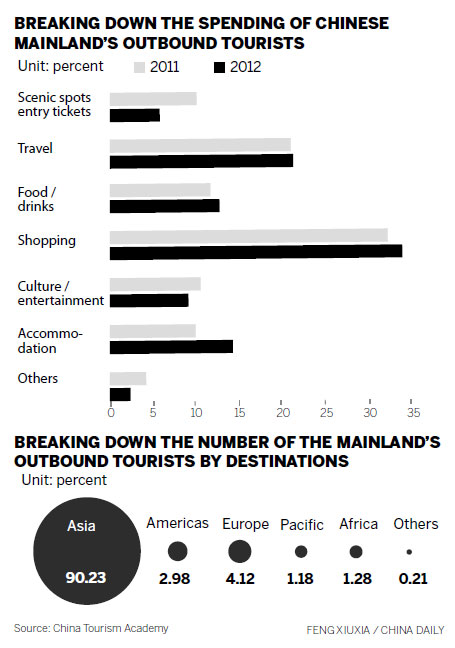
Today's Top News
Eurozone economy 'on course for recovery'
Chinese remain biggest overseas spenders
China remains a magnet for foreign investment
Arms Trade Treaty opens for signature
Chinese, Costa Rican presidents discuss co-op
Family plans lawsuit in teen worker's death
Wrongly imprisoned man seekspayment
Workshop fire kills at least 119
Hot Topics
Lunar probe , China growth forecasts, Emission rules get tougher, China seen through 'colored lens', International board,
Editor's Picks

|

|

|

|

|

|
